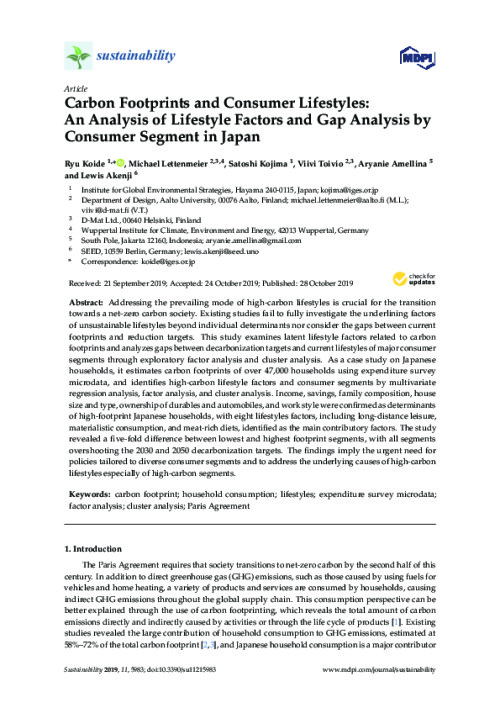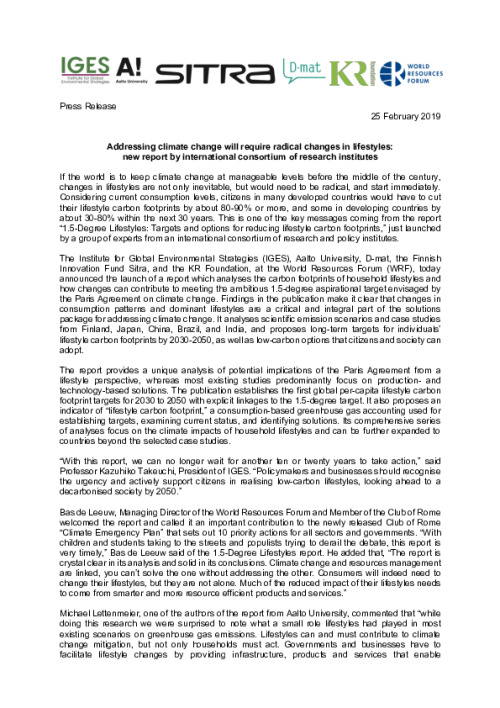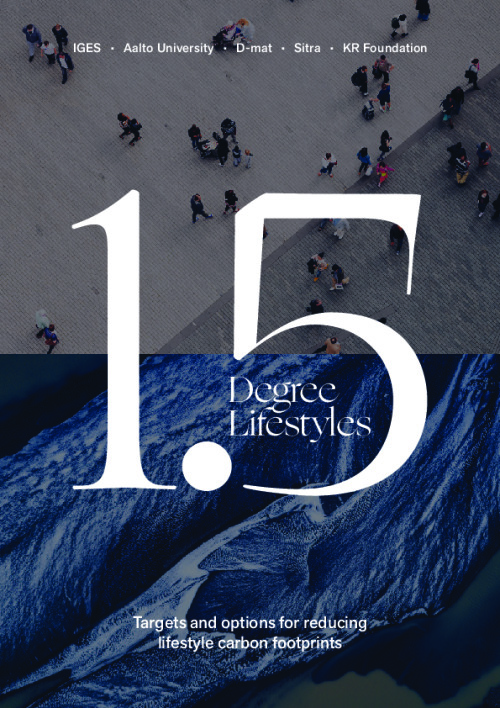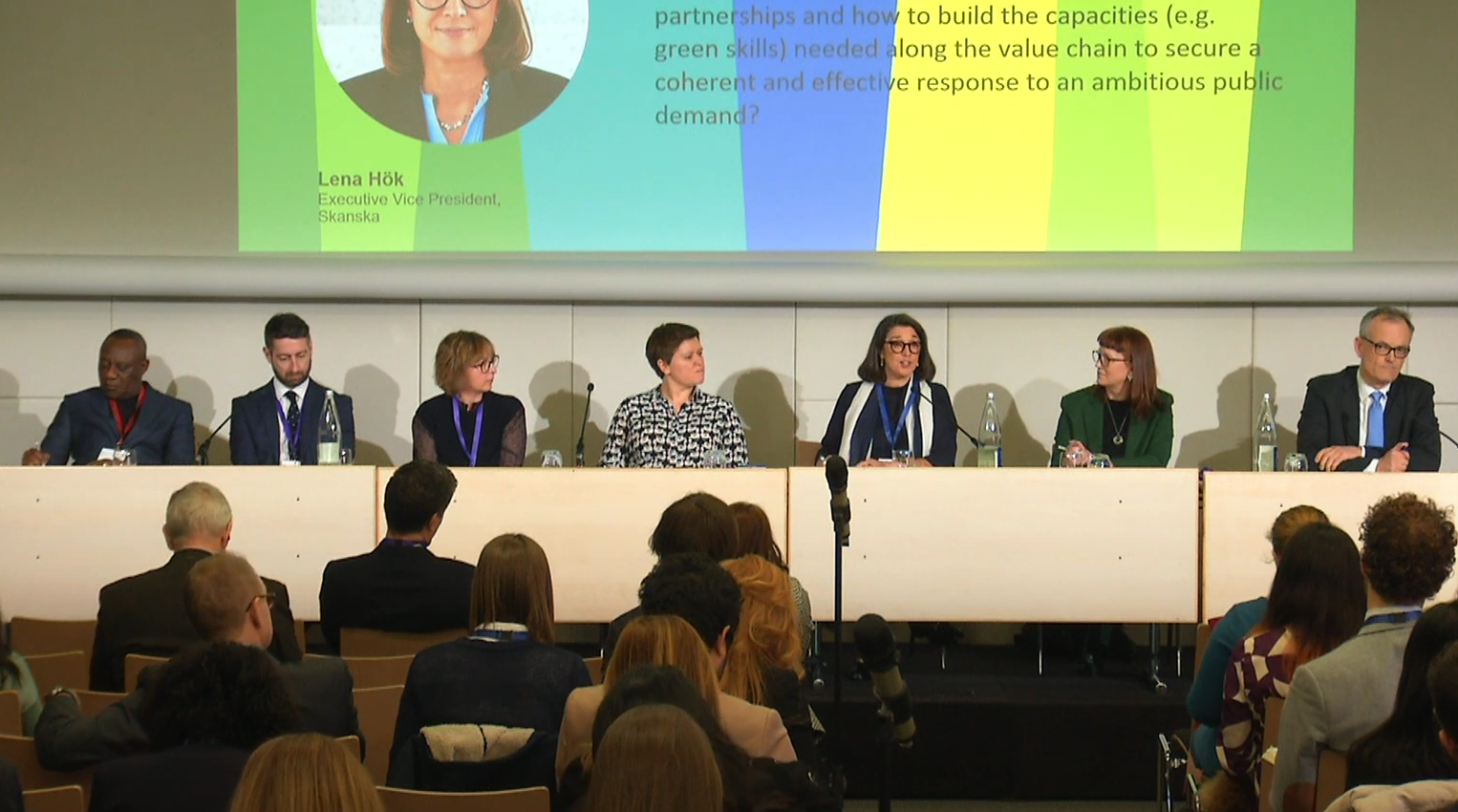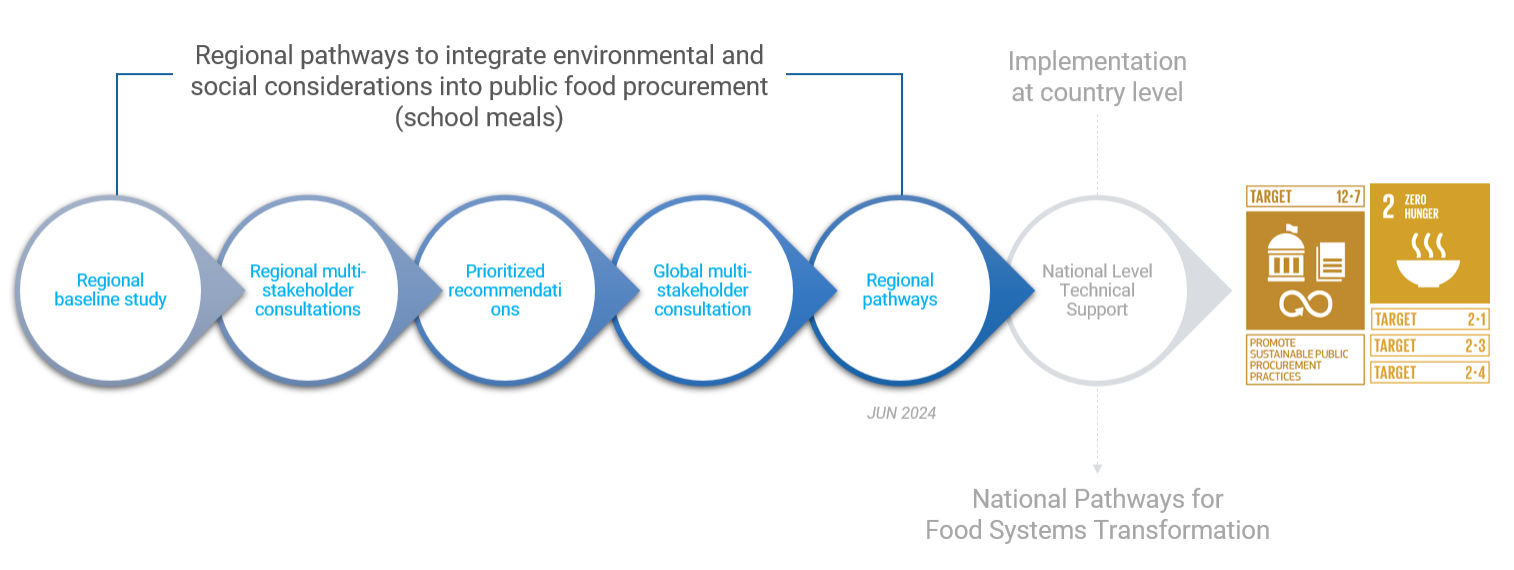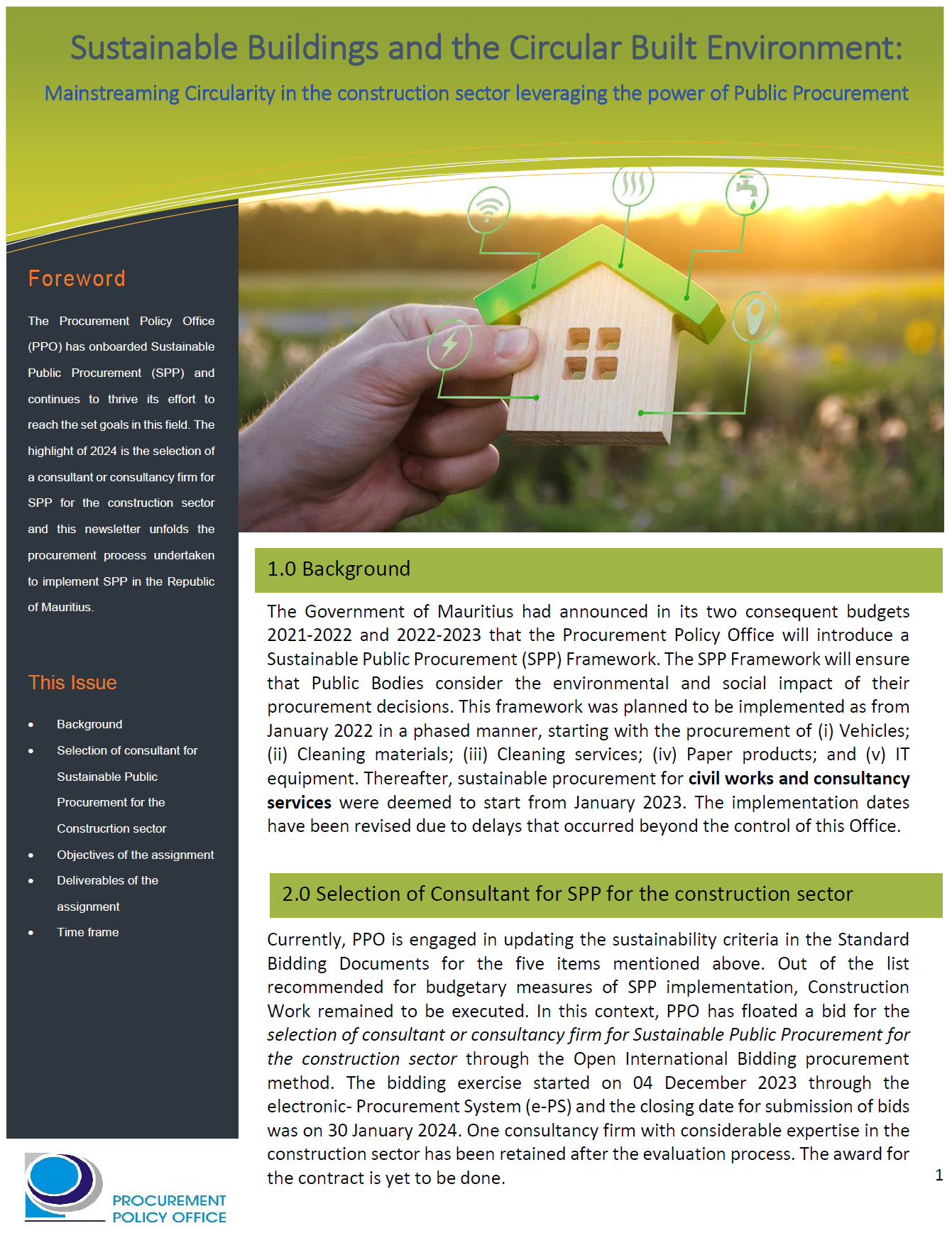Technicqal Report "1.5 ASTEENELÄMÄNT AVAT Miten voimme pienentää hiilijalanjälkemme ilmastotavoitteiden mukaiseksi?"
This Finnish version of the technical report "1.5-degree Lifestyles" demonstrates that changes in consumption patterns and dominant lifestyles are a critical and integral part of the solutions package to addressing climate change. The report fills a gap in the existing research by establishing global targets for lifestyle carbon footprints, examining current consumption patterns and their impacts on footprints, and evaluating potential reduction impacts of low-carbon lifestyle options. The results of the analysis are striking, showing in some cases the need for reductions of over 80% in greenhouse gas emissions (GHG) by 2050 from today's intensity of lifestyles. Reductions will be necessary not only for developed countries; several developing countries will also need to reduce their average per capita emissions from current levels – a significant challenge where the basic needs of large parts of their populations are often still not met. However, as also identified in the report, there are clear opportunities for much needed changes, and these would require that actions start as soon as possible.
The report proposes globally unified per capita targets for the carbon footprint from household consumption for the years 2030, 2040 and 2050. It estimates current average carbon footprints of Finland and Japan, as well as Brazil, India, and China, focusing on the comparison of the level of physical consumption in order to be both comparable to global targets and compatible with household-level solutions. It also identifies potential options for reducing lifestyle carbon footprints on the basis of the literature and assesses the impact of such options in Finnish and Japanese contexts. It concludes with suggestions and implications in terms of how to proceed towards lifestyles compatible with the 1.5 °C target. As the report only covers the countries given above, similar studies can be expanded to other countries using the methodology, data sources, and results of estimation that are detailed in Annexes.
